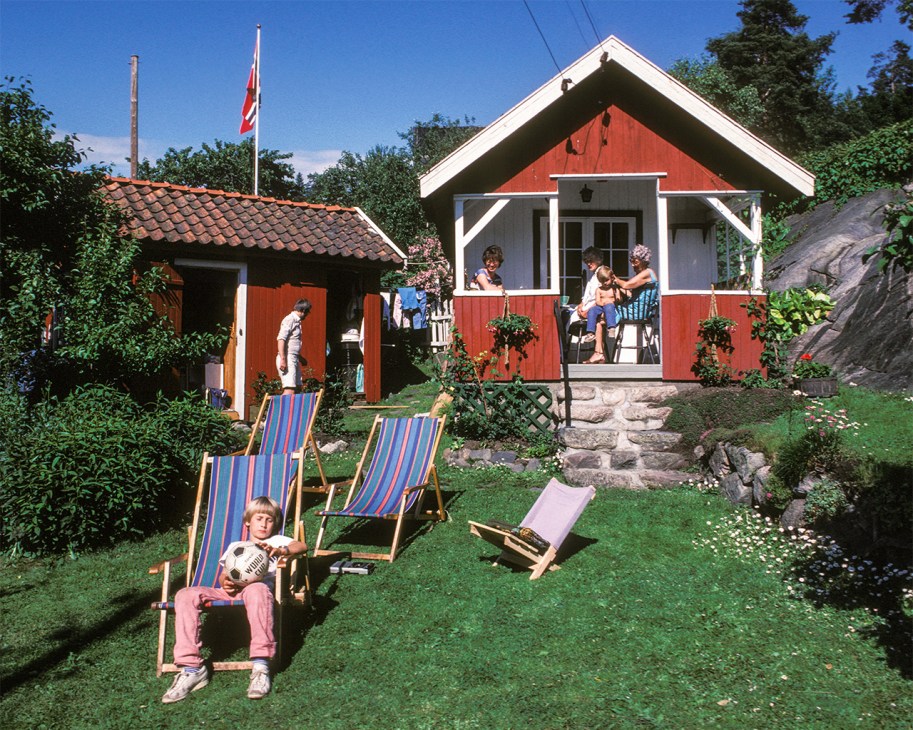Summerhouse rules: Scandinavian nuances and where the smart money is spent
The annual shift of Scandinavians to their summerhouses has begun. How the nationalities choose to holiday is subtly revealing.
Take a trip to Copenhagen, Stockholm or Oslo right now and you will find these Nordic capitals bereft of locals. The great migration of the Scandinavians to their summerhouses is well underway.
But the type of summerhouse that each of the old Viking tribes favours says a lot about them. A Norwegian views theirs primarily as a base for friluftsliv (open-air living), which involves unnecessarily arduous tasks such as hiking, canoeing or chopping wood in preparation for a winter of crosscountry skiing, downhill skiing and – I wouldn’t put it past them – probably uphill skiing too. The Swedes’ ideal summerhouse is a hut deep in the woods, far from other humans, with no running water, electricity or heating – plus a cloud of flying, biting things that lurks just outside the door. An idyllic blend to appease Sweden’s primary national urges for solitude and masochism.

Fortunately for this Denmark resident, the Danes take a more laissez-faire approach. A Danish summerhouse is a place to chill, talk, sleep, read, drink and pursue other leisurely pleasures, ideally within sight of a beach. For that reason, it will be designed with the lowest possible maintenance in mind: the grass can grow long (it being good for biodiversity is the excuse); the mismatched furniture is part of the vibe; and never mind the sand in the kitchen – it’s a summerhouse, after all.
But best of all, when you buy a Danish summerhouse – as I have just done, completing the final piece of my assimilation – it comes with all the furniture, crockery and bedding from the previous owners. What’s in that cupboard? Ah, two decades’ worth of completed wordsearch books and Donald Duck comics. Is that Chinese vase in the toolshed worth anything? The Søstrene Grene sticker suggests otherwise. Will the oven work (no) and what to do with the tiki-style lounge furniture? The answer: give it away on the front lawn. But don’t forget to put the amateurish art back up when the former owner pops round for a friendly coffee.
Yet while a Danish summerhouse might appear a relaxed place, somewhere to escape the relentless narcissism-of-small-differences status race of Copenhagen’s bridge quarters – the truth is that there is still much to decode in the summerhouse landscape.
Location, of course, is a status symbol. It explains why a house two miles (3.2km) from the sea in Tisvildeleje – the once old money, now just money resort on the north coast of Zealand – will cost as much as one right on the beach elsewhere on the island. Meanwhile, Skagen, at the northern tip of Jutland, is the summerhouse resort of choice for the nouveau riche but only for one specific week in mid-July: week 29 (Danes order their year by the number of the week). Locals refer to this as “Hellerup Week”, after the northern suburb of Copenhagen where said nouveaus and social-media influencers otherwise reside.

The west coast of Jutland holds a special place in Danish hearts and so there are tens of thousands of summerhouses nestled here in the hilly sands that stretch from the German border right up to “Cold Hawaii”, as the northern Jutland surf resort of Klitmøller is known (klit means “dune” in Danish; get over it). But I have never understood the appeal of this coast: for about 363 days of the year, the sea is too rough for swimming and relentless winds whip sand in your face. Is there an exfoliating effect that I’m missing?
Recently, the smart summerhouse money has been heading for the previously unloved island of Lolland to the south of Copenhagen. It’s a bet on the influx of German tourists who will be connected to Lolland via the Fehmarnbelt tunnel, due to open in 2029. But I have a soft spot for the South Funen Archipelago, with its dolphins, fishing harbours and a culture and history all of its own.
As a foreigner, I am free to choose my summerhouse location without all the socio-economic baggage, so I am writing this at my dining table (pine, naturally) looking out on a sandy beach, watching the sun set behind the island in the bay as the local ferry chugs steadily across the horizon. It still cost several times my first flat in Pimlico – for a little wooden shack with a supposedly flat but worryingly bowed roof – but it is, for July at least, home.



